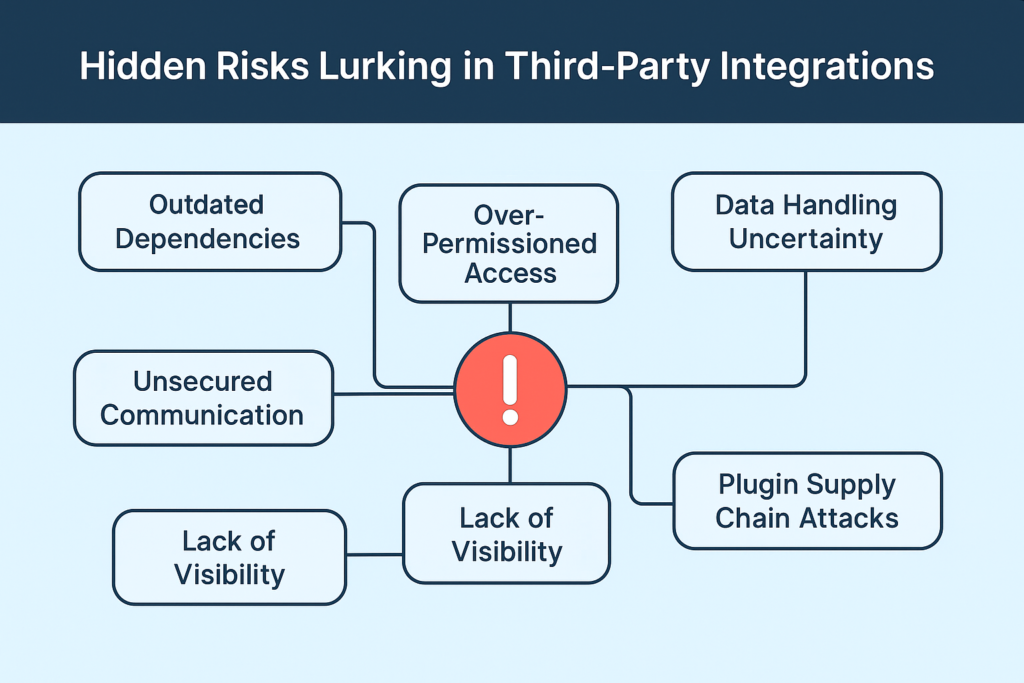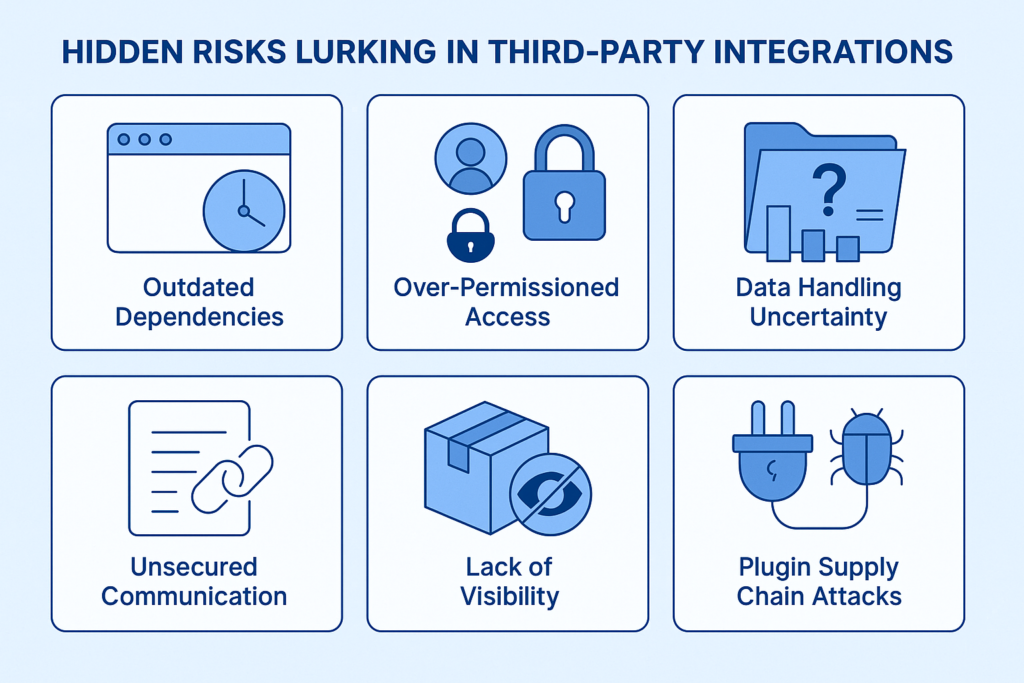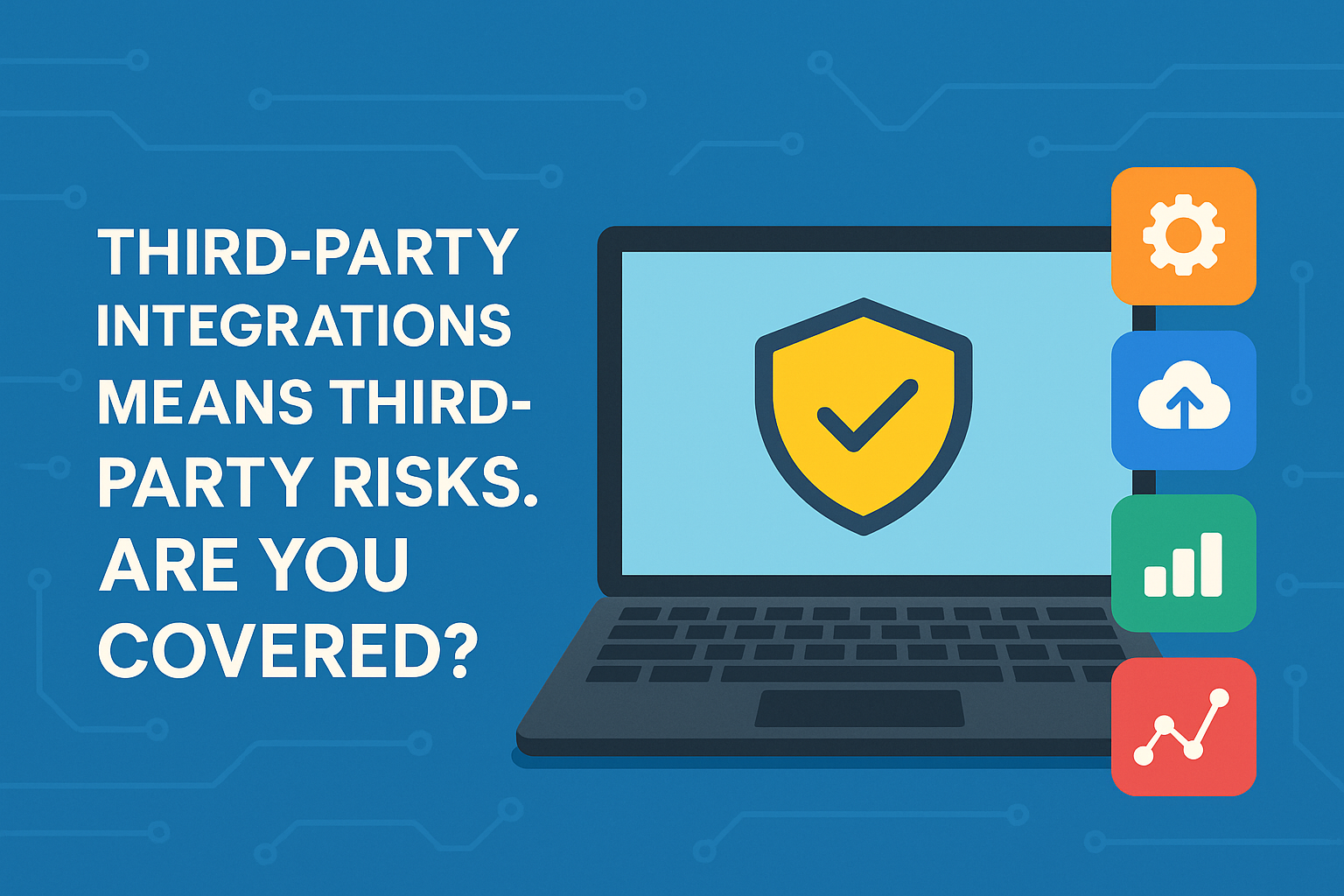From payment gateways to analytics tools, modern SaaS products often rely on third-party integrations to deliver functionality faster. But what’s convenient can also be risky — especially when you don’t control the code.
This blog explores how third-party components can introduce security risks into your application and what steps you can take to secure them. Whether you’re a tech founder, CTO, or engineering lead, this article will help you rethink how you handle integrations — and why a professional audit might save you from serious breaches.
Hidden Risks Lurking in Third-Party Integrations

Here’s how your favorite tools might become your biggest liability — and how a security & compliance audit can help:
1. Outdated Dependencies
Old libraries often come with known vulnerabilities that hackers can easily exploit. Without regular updates, your app inherits their weaknesses.
2. Over-Permissioned Access
Third-party services sometimes request more permissions than they need — giving them unnecessary access to user data, files, or even admin privileges.
3. Data Handling Uncertainty
You may trust your own data practices — but can you vouch for your integrations? Many plugins or SDKs transmit sensitive data to external servers, raising serious compliance issues under GDPR or HIPAA.
4. Unsecured Communication
Not all tools use secure communication channels. If APIs or integrations aren’t using encryption (SSL/TLS), your app could be exposed to man-in-the-middle attacks.
5. Lack of Visibility
You might not even know which packages or services are embedded deep within your system, especially in large dev teams using multiple NPM packages or open-source tools.
6. Plugin Supply Chain Attacks
Attackers often inject malicious code into popular third-party libraries. If you’re not vetting sources properly, you may be unknowingly shipping vulnerabilities.
How to Build a Safer Integration Strategy
While third-party tools are inevitable, smart companies audit them before and after integration. Here’s what you should include in your strategy:
- Maintain an inventory of all integrations and open-source dependencies
- Run regular vulnerability scans across third-party code
- Monitor for dependency updates and patch vulnerabilities quickly
- Enforce principle of least privilege for third-party access
- Document and review data flow to and from all external tools
- Perform a third-party security audit at least twice a year
You don’t have to do it all yourself — Azeosoft’s Security & Compliance Audit Services specialize in analyzing third-party integrations and identifying hidden risks you might overlook.
Why Third-Party Doesn’t Mean Trusted: A Deeper Look
It’s easy to assume that popular tools are safe — but even large companies like SolarWinds, Mailchimp, and Okta have been exploited through third-party weaknesses.

The lesson? Trust should be verified — not assumed.
Each time you install a plugin or connect a service, you extend your attack surface. You’re no longer just securing your app — you’re now responsible for the code and infrastructure you don’t control.
Security isn’t just about internal practices anymore — it’s about your entire software supply chain. That’s where a professional eye can help you detect what automated scans might miss.
TL;DR
Third-party integrations aren’t going anywhere — but neither are the threats they bring. As your product grows, so does its complexity. The only way to ensure you’re not exposed is to proactively audit and secure your integrations.
Let experts like Azeosoft dive into your tech stack and highlight the cracks before attackers do. Because in security, assumptions are expensive, and oversights are costly.
Build faster, integrate smarter — but always secure stronger.

